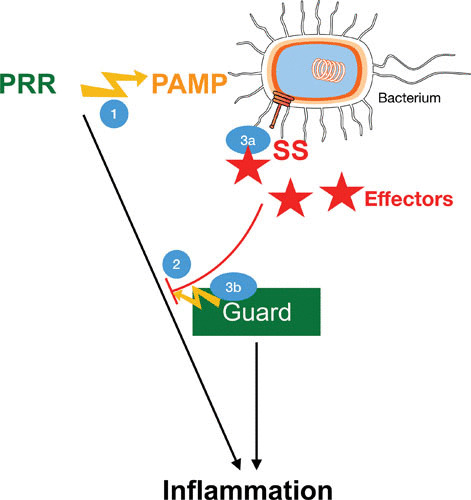FIGURE 1.

Evolutionary arms race between the host immune system and bacterial virulence mechanisms. (1) PRRs recognize PAMPs and activate conserved signaling pathways that induce transcriptional activation of inflammation with expression of cytokines and interferons. (2) Pathogenic bacteria use secretion systems (SS) to inject effector proteins into host cells. The diverse functions of these effectors include the ability to block different components of PRR-induced pathways. (3) The activities of pathogenic bacteria are detected by guard proteins. In vertebrates, these are mostly NLRs and other inflammasome stimulators. They detect the presence of T3SSs and T4SSs, usually through the formation of pores in host membranes (3a) and posttranslational modification of host proteins (3b). Consequently, NLRs and inflammasomes induce inflammation at the transcriptional and posttranslational levels through caspase-dependent activation of pyroptosis.
